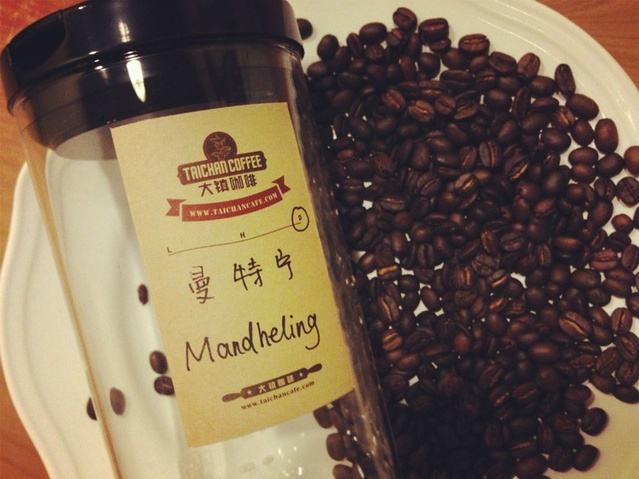The variety and style of Typica Tibikati pickup truck
Tiebika (Typica Tibikati pickup) is the species name of coffee beans and is one of the oldest varieties of Arabica.
Iron pickup, also known as the old variety of small-grain coffee, its yield is less, cultivation is difficult, so the price is much higher than ordinary small-grain coffee. Tibica coffee, native to Ethiopia and southeastern Sudan, is the most widely cultivated variety of coffee in the Western Hemisphere. The plant is stronger, but not light-tolerant, and the yield is higher in Hawaii. The top leaf of Tibika is red and copper, which is called red top coffee.
Typica Tibica (Tibica): the oldest native variety in Ethiopia, all Arabica are derived from Tibica. It belongs to the ancient coffee with elegant flavor, but its physique is weak, its disease resistance is poor and it is easy to catch rust leaf disease, and its fruit yield is also low, which is not in line with economic benefits. In recent years, Tibika has been gradually replaced by Kaddura and Kaduai in Central and South America, which is becoming more and more rare. Although Tibica has a good flavor, it is not nearly as popular as bourbon. One of the features is that Tibika's parietal leaves are bronzed. Mantenin, Blue Mountain, Elephant Bean, Kona, Yunnan Xiaodou, Rosa, and so on, are all derived varieties of Tibika. Tibica's beans are larger, pointed, oval or thin, different from Bourbon's round beans.
Bourbon: juxtaposed with Tibica as an ancient and excellent variety. Some botanists even believe that Bourbon is a variant of the early Tibika transplanted to Yemen, where the bean shape changed from a thin tip to a round body. It was not until 1715 that France transplanted Mocha round beans from Yemen to the island of Bourbon on the east coast of Africa, and it was not until 1715 that it received the name round bourbon. Bourbon, which spread to Brazil and Central and South America in 1727, is also round beans. In addition, the British transplant of Yemeni mocha to St. Helena Island in 1732 was also a round bean. interestingly, it did not pass through Bourbon Island, but it was named Green Top Bourbon. It can be seen that the industry thinks that all the world's bourbon beans come from Bourbon Island is a big misunderstanding. It is important to recognize that there are many round bourbon beans that spread directly from Yemen without passing through the island of bourbon. In 181○, some of the round beans on Bourbon Island mutated into pointed beans, also known as the "pointed body of bourbon." its caffeine content was only half that of ordinary coffee, and its output was low, weak, and extremely rare.
With the exception of Ethiopia, the origin of Arabica, the mutants or mixed-race varieties cultivated or found in Central and South America, India and East Africa are mainly Tibica and bourbon, and the genetic complexity is far lower than that of Ethiopia. this is the main reason for the weak physique and poor disease resistance of Arabica outside Ethiopia.
In addition, the biggest thing that bourbon and Tibica have in common is that shade trees must be "protected" to help block the sun. These two ancient varieties, such as unshaded trees, will not be conducive to growth and flavor development.
Common cultivated varieties of coffee, types of coffee beans:
Tibica (Typica)
Bourbon (Bourbon bourbon)
Gene mutant:
Kenya [SL28] and [SL34] (Bourbon's own)
Rose summer (Geisha geisha coffee)
Yellow bourbon (Bourbon Amarello)
Kaddura (Caturra)
Pacas (Pacas)
Vera Saatchi (Villa Sarchi)
Elephant bean (Maragogype Malagorhippi)
Arabica intraspecific hybridization (Intraspecific Hybrid)
New World (Mundo Novo)
Kaduai (Catuai)
Pacamara (Pacamara)
Kent (Kent)
Interspecific hybridization between Arabica and Robusta stout bean (Interspecific Hybrid)
Timor (Tim)
Kadim (Catimor)
Ikatu (Icatu)
Ruyilu 11 (Ruiru 11)
Qiangzhuogili (Chandragiri)
Important Notice :
前街咖啡 FrontStreet Coffee has moved to new addredd:
FrontStreet Coffee Address: 315,Donghua East Road,GuangZhou
Tel:020 38364473
- Prev

Baking of Arabica species-Mantenin Fine Coffee beans in Indonesia
Manning, I call him the gentleman in coffee. Mellow, fragrant and elegant has become synonymous with him. The gentleman in this coffee is made in Sumatra, Indonesia in Asia, so you can also call it Sumatran coffee. Nowadays, most coffee in Indonesia is planted by Robbins, which originated from a catastrophe in 1877. Coffee rust destroyed almost all coffee trees and people.
- Next

The World's most expensive Coffee-the Origin of Kopi Luwak
The origin of Kopi Luwak: Musk Kopi Luwak, produced in Indonesia, grows a lot of coffee in Indonesia, where there is an omnivorous wild animal with a pointed mouth and dark gray fur called the civet. This kind of cat likes to eat fresh coffee beans best. when the wild cat eats fresh coffee beans, after several times of fermentation and digestion, it finally becomes the cat's poop.
Related
- Beginners will see the "Coffee pull flower" guide!
- What is the difference between ice blog purified milk and ordinary milk coffee?
- Why is the Philippines the largest producer of crops in Liberia?
- For coffee extraction, should the fine powder be retained?
- How does extracted espresso fill pressed powder? How much strength does it take to press the powder?
- How to make jasmine cold extract coffee? Is the jasmine + latte good?
- Will this little toy really make the coffee taste better? How does Lily Drip affect coffee extraction?
- Will the action of slapping the filter cup also affect coffee extraction?
- What's the difference between powder-to-water ratio and powder-to-liquid ratio?
- What is the Ethiopian local species? What does it have to do with Heirloom native species?

